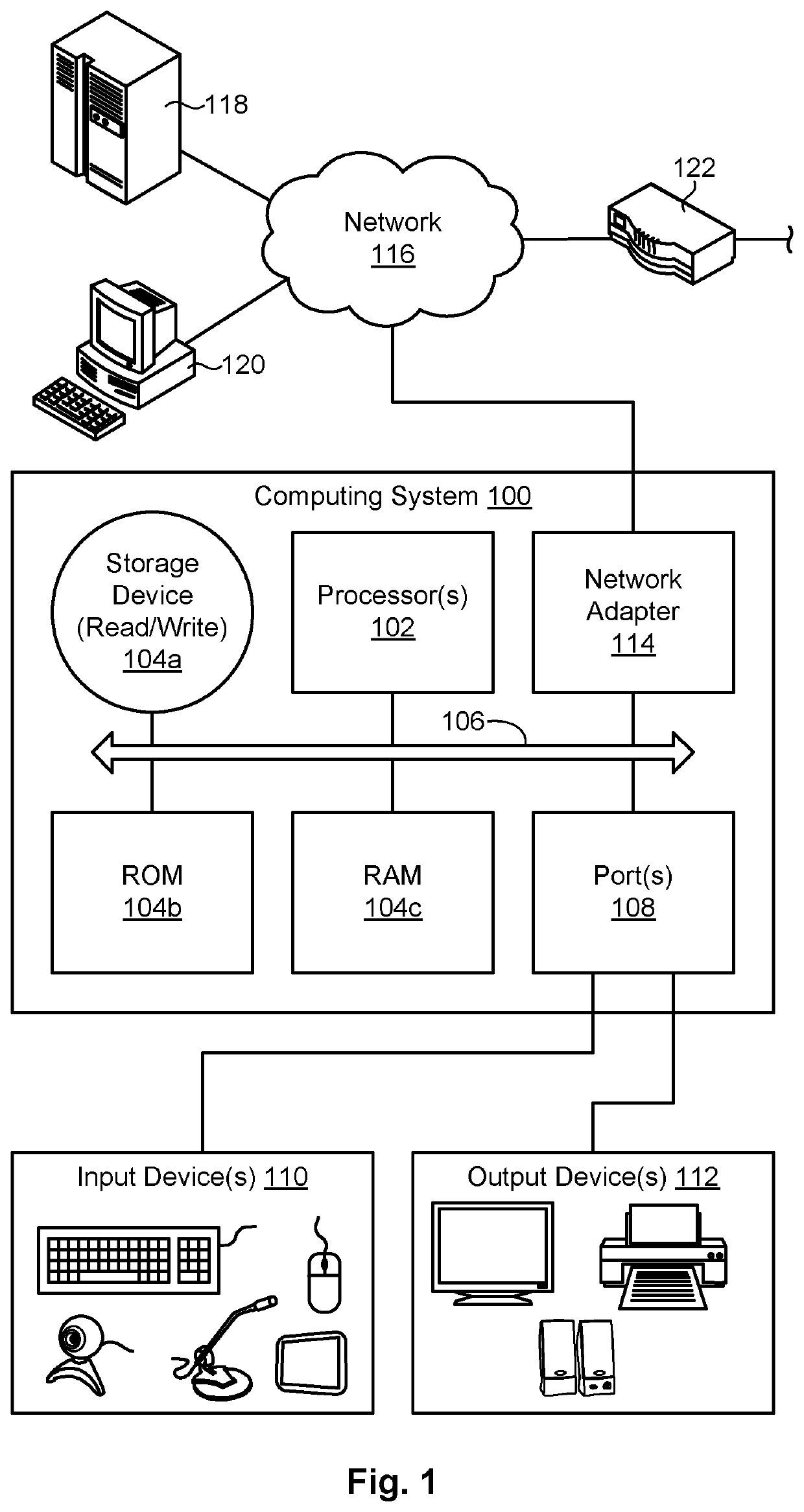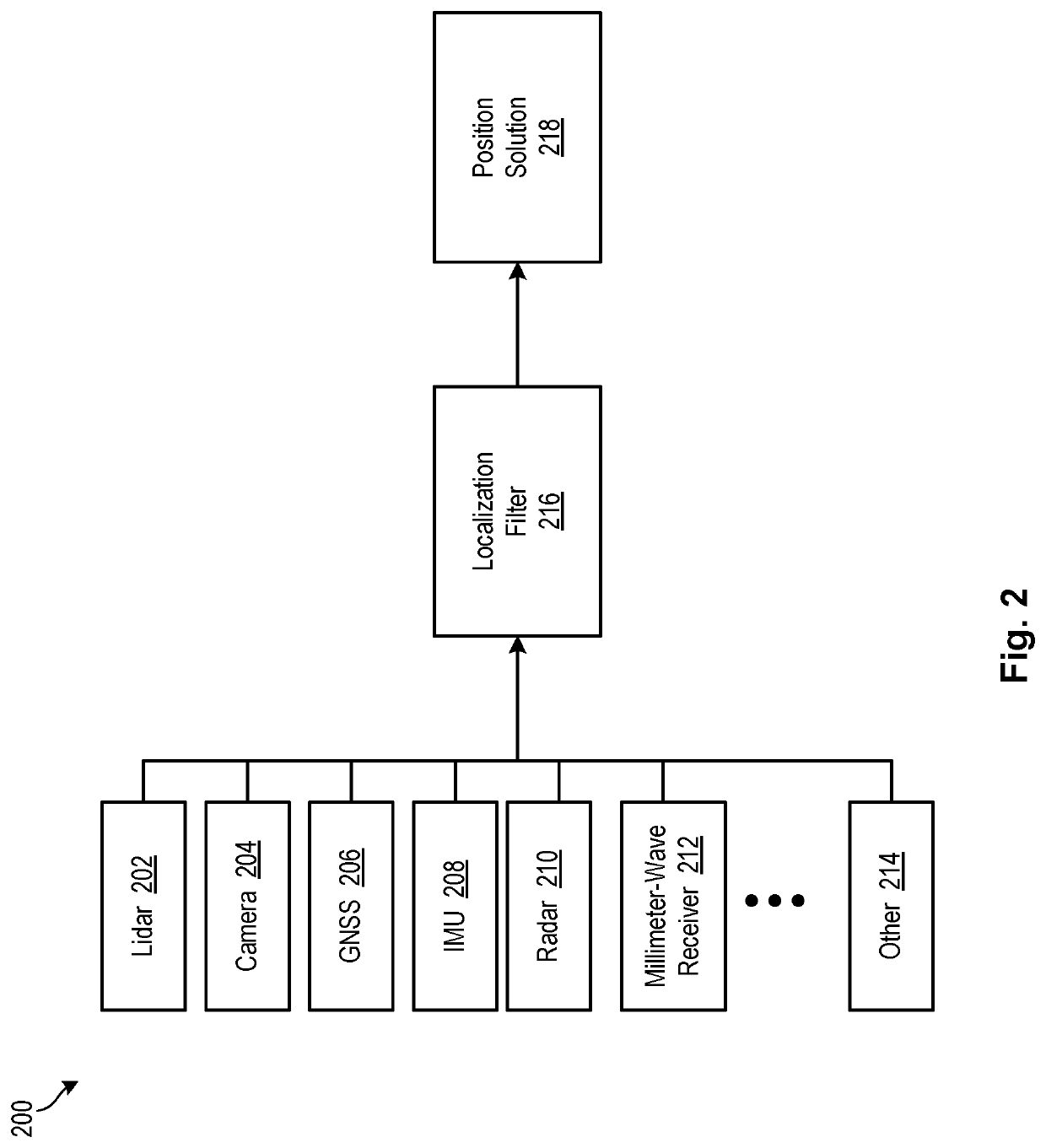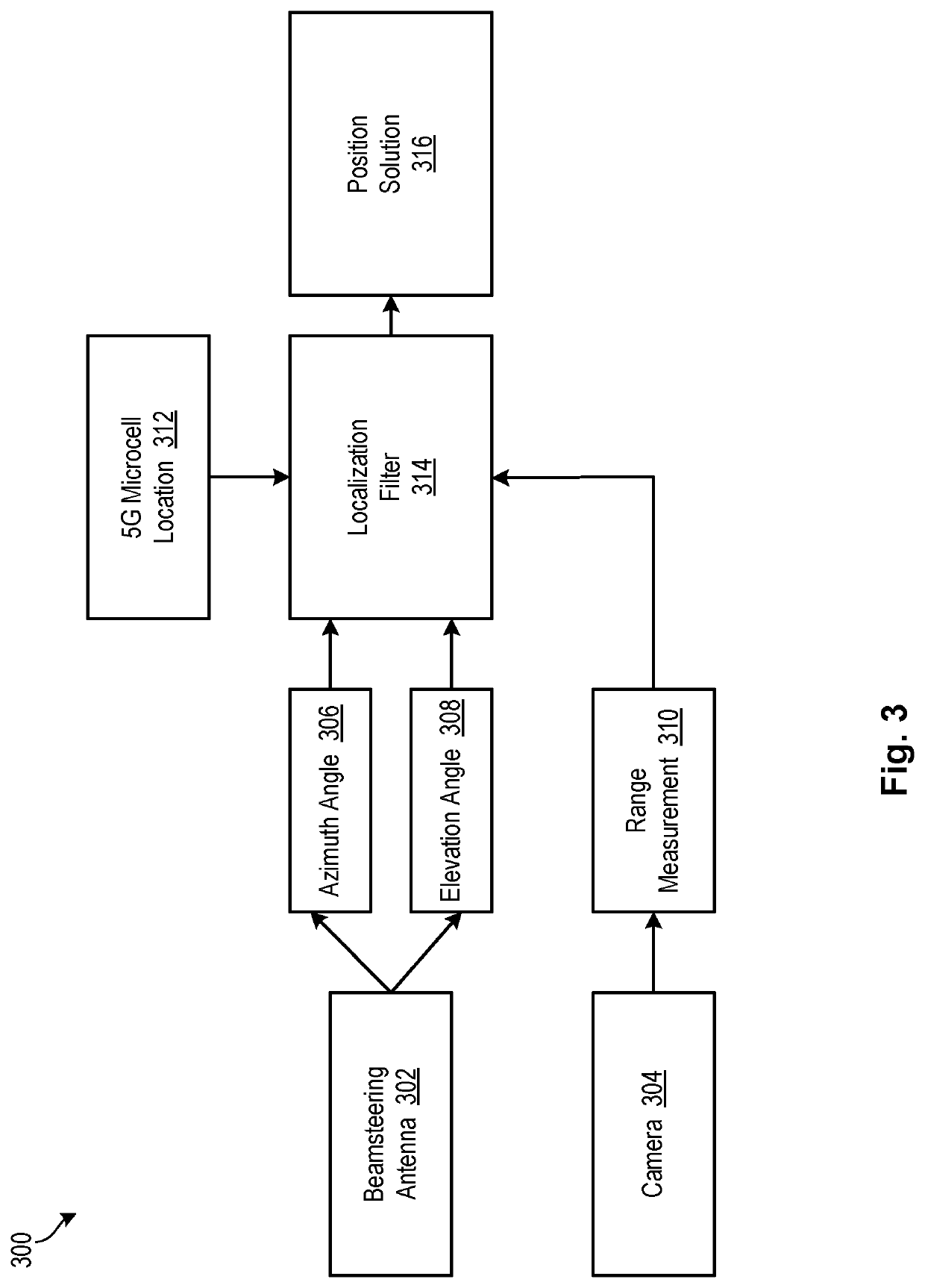Autonomous Vehicle Localization Using 5G Infrastructure
a technology for autonomous vehicles and infrastructure, applied in vehicle position/course/altitude control, using reradiation, instruments, etc., can solve problems such as inability to accurately locate vehicles, etc., to achieve minimal computational costs of systems and methods
- Summary
- Abstract
- Description
- Claims
- Application Information
AI Technical Summary
Benefits of technology
Problems solved by technology
Method used
Image
Examples
Embodiment Construction
[0013]Referring to FIG. 1, one example of a computing system 100 is illustrated. The computing system 100 is presented to show one example of an environment where a system and method in accordance with the invention may be implemented. The computing system 100 may be embodied as a mobile device 100 such as a smart phone or tablet, a desktop computer, a workstation, a server, or the like. The computing system 100 is presented by way of example and is not intended to be limiting. Indeed, the systems and methods disclosed herein may be applicable to a wide variety of different computing systems in addition to the computing system 100 shown. The systems and methods disclosed herein may also potentially be distributed across multiple computing systems 100.
[0014]As shown, the computing system 100 includes at least one processor 102 and may include more than one processor 102. The processor 102 may be operably connected to a memory 104. The memory 104 may include one or more non-volatile s...
PUM
 Login to View More
Login to View More Abstract
Description
Claims
Application Information
 Login to View More
Login to View More - R&D
- Intellectual Property
- Life Sciences
- Materials
- Tech Scout
- Unparalleled Data Quality
- Higher Quality Content
- 60% Fewer Hallucinations
Browse by: Latest US Patents, China's latest patents, Technical Efficacy Thesaurus, Application Domain, Technology Topic, Popular Technical Reports.
© 2025 PatSnap. All rights reserved.Legal|Privacy policy|Modern Slavery Act Transparency Statement|Sitemap|About US| Contact US: help@patsnap.com



